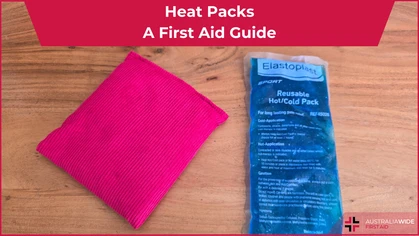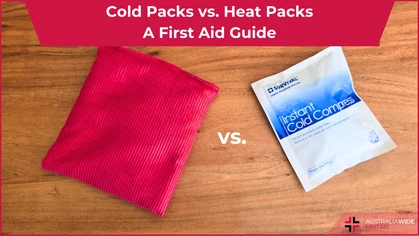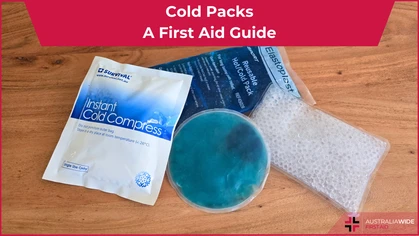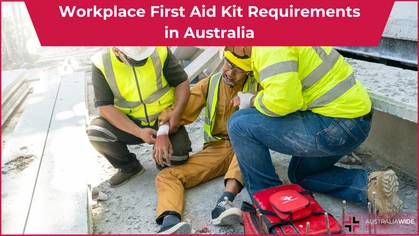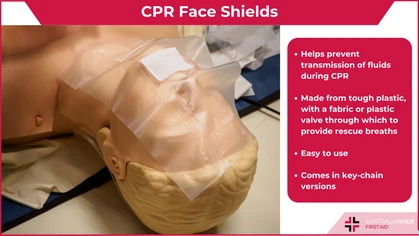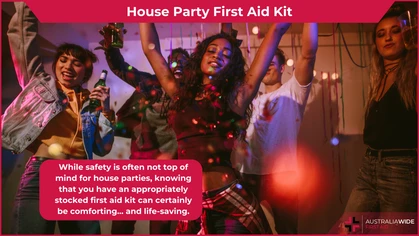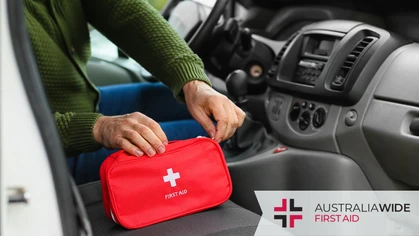Sterile Saline Tubes: Why and How to Use for Rinsing Eyes

First Aid Equipment
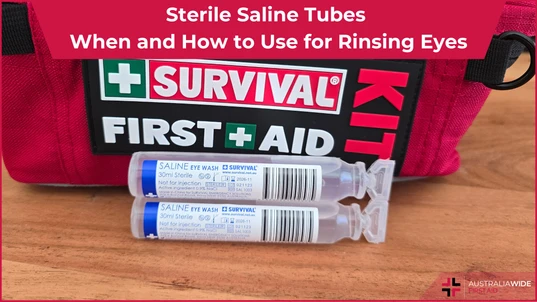 Accidents and injuries involving the eyes can be alarming and require immediate attention to prevent further damage.
When it comes to first aid for eye injuries or irritations, the choice of irrigation solution is crucial.
While tap water is commonly available, using sterile saline tubes is recommended for several important reasons.
It is for these reasons that you should ensure you have sterile saline tubes in your first aid kits. This is especially important if you are hiking, camping, or otherwise spending time away from a clean water source.
Accidents and injuries involving the eyes can be alarming and require immediate attention to prevent further damage.
When it comes to first aid for eye injuries or irritations, the choice of irrigation solution is crucial.
While tap water is commonly available, using sterile saline tubes is recommended for several important reasons.
It is for these reasons that you should ensure you have sterile saline tubes in your first aid kits. This is especially important if you are hiking, camping, or otherwise spending time away from a clean water source.
Saline Solution vs Tap Water
In first aid scenarios, using sterile saline tubes for eye irrigation is significantly safer and more effective than using tap water. The sterility, balanced composition, and controlled delivery of saline make it the ideal choice for treating eye injuries or irritations. By choosing sterile saline, you reduce the risk of infection, minimize discomfort, and enhance the overall efficacy of the first aid treatment, ensuring better outcomes for eye health and safety. Sterility and Safety Sterile Saline:- Free of Contaminants: Sterile saline is specifically formulated to be free from bacteria, viruses, and other pathogens. This ensures that no additional contaminants are introduced into the eye during irrigation.
- Controlled Composition: The saline solution has a balanced composition, closely matching the body's natural fluids, which reduces the risk of irritation or adverse reactions.
- Potential Contaminants: Tap water can contain microorganisms, chemicals that may potentially be harmful to your eyeballs, and impurities, even if it is generally safe for drinking. These contaminants can cause infections or exacerbate eye injuries, particularly in an eye that is already irritated or damaged.
- Variable Quality: The quality of tap water can vary significantly depending on location and local water treatment practices, making it an unreliable choice for sterile first aid.
- Isotonic Solution: Saline is an isotonic solution, meaning its salt concentration is similar to that of the body's cells and tissues. This makes it gentle on the eyes, minimizing discomfort and potential damage.
- Balanced pH: The pH of sterile saline is balanced to match the natural environment of the eye, preventing irritation and promoting comfort during irrigation.
- Inconsistent pH and Osmolarity: Tap water may have a different pH level and osmolarity compared to the body's natural fluids. Using water with an inappropriate pH or osmolarity can cause irritation, dryness, or further damage to the eye tissues.
- Effective Irrigation: The sterile saline solution is designed to effectively flush out debris, chemicals, and foreign particles without causing additional harm. It provides a gentle yet thorough cleaning action.
- Controlled Flow: Sterile saline tubes often come in convenient packaging that allows for controlled, directed flow, ensuring that the solution reaches the affected areas without waste or splashing.
- Less Effective: The flow from a tap might be too forceful or difficult to control, increasing the risk of injury.
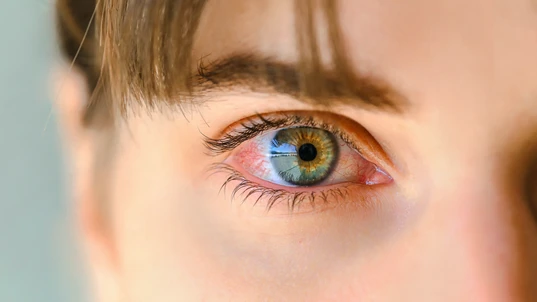
When to Use Sterile Saline for Rinsing Eyes
Rinsing your eyes, otherwise known as eye irrigation, can be needed for a number of reasons. Foreign Particles: Dust, dirt, or small debris can accidentally enter the eye, causing discomfort and potential damage if not promptly removed. Chemical Exposure: Accidental splashes of chemicals, such as cleaning agents or industrial solvents, can severely injure the eyes, requiring immediate irrigation. Allergic Reactions: Allergens like pollen can cause irritation and inflammation, necessitating a gentle rinse. Dry Eyes: In cases of severe dryness, a saline rinse can provide temporary relief by moisturizing the eye surface.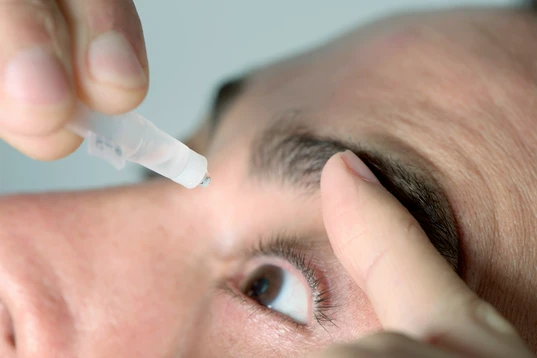
How to Use Sterile Saline Tubes for Eye Rinsing
Supplies Needed:- Sterile saline tube
- Clean tissue or cloth
- Disposable gloves (if available)
- Assess the Situation: Determine if the eye needs immediate rinsing. For chemical exposures, act quickly to prevent further damage.
- Wash Your Hands: Before handling the saline tube, wash your hands thoroughly with soap and water to reduce the risk of infection.
- Wear Gloves: If available, wear disposable gloves to maintain a sterile environment and protect yourself from potential contaminants.
- Open the Saline Tube: Check the expiration date on the saline tube. Twist or snap off the cap without touching the tip to avoid contamination.
- Position the Person: Have the person sit or lie down with their head tilted back slightly. If rinsing your own eye, lean your head back over a sink or use a mirror to guide you.
- Hold the Eye Open: Gently pull down the lower eyelid with one hand while holding the saline tube with the other. If assisting someone else, ask them to look up or away from the source of the rinse.
- Rinse the Eye: Squeeze the saline tube gently, directing a steady stream of solution from the inner corner of the eye (near the nose) to the outer corner. This helps to flush out debris or chemicals effectively without spreading them further into the eye.
- Encourage Blinking: Ask the person to blink frequently during the process to assist in dislodging particles and ensuring thorough rinsing.
- Dry the Area: Use a clean tissue or cloth to gently dab away excess saline from around the eye, being careful not to rub the eye itself.
- Observe and Follow Up: After rinsing, observe the eye for any signs of persistent irritation, redness, or discomfort. If symptoms continue or worsen, seek medical attention promptly.
Important Tips
Do Not Reuse Tubes: Sterile saline tubes are intended for single use only to maintain sterility and prevent contamination. Check Expiry Dates: Ensure the saline solution is within its expiration date to guarantee its effectiveness and safety. Avoid Direct Contact: Do not let the tip of the saline tube touch the eye, eyelids, or any other surface to keep the solution sterile. Seek Medical Help for Severe Cases: For serious injuries, such as chemical burns or penetrating eye injuries, seek immediate medical attention after initial rinsing.Conclusion
Using sterile saline tubes for eye rinsing is a straightforward yet crucial first aid technique. Whether dealing with minor irritants or more serious exposures, knowing when and how to properly rinse the eyes can prevent further damage and promote healing. Always keep sterile saline tubes in your first aid kit and be prepared to act quickly and effectively in case of an eye emergency. Proper eye care can make a significant difference in the outcome of an injury, and saline rinsing is a key component of that care.
Originally published at
https://www.australiawidefirstaid.com.au/resources/sterile-saline-tubes:-why-and-how-to-use-for-rinsing-eyes
as part of the Australia Wide First Aid Articles Library
